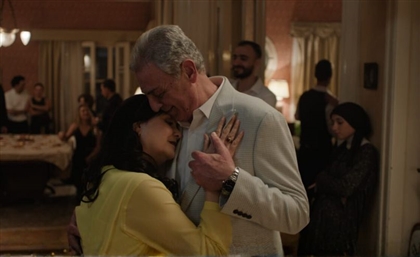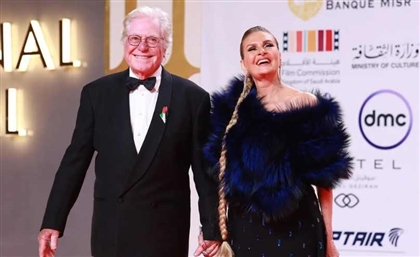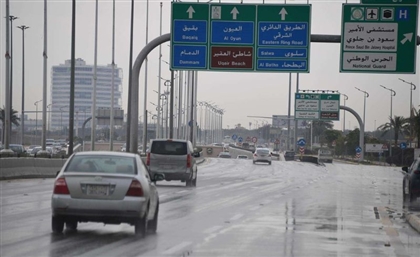How to Make an Egyptian Short Film
“The production journey is the story, this is what I want to talk about. How we made this film,” says filmmaker Hassan Nouby.
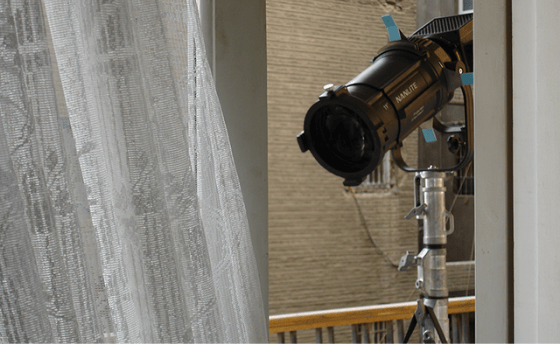
Originally Published on November 28th, 2025
To make a short film in Egypt today is to share a moodboard of your dream location on an Instagram story and scout via friends of friends. Or to travel from Cairo to Aswan on a train with cameras and drones and hope for the best. It is to fundraise, borrow, barter, or rely on a tight-knit film community.
That is the case for a short film “independent of” the system/industry/structure of filmmaking in Egypt today, whether in its funded commercial model or its “indie” company-produced model. At the 46th edition of the Cairo International Film Festival (CIFF), I focused on the films with little to no production company logos on their credits, looking for a new “genre” of production. A genre not unique in theme or story, but in method, a look into the making, before the film.
The earliest known use of the word filmmaker dates back to 1889, defined as the “producer of film for cameras.” To make, to produce, to tell a story through a sequence of images is rooted in labour. And in Egypt, with this presumable “genre,” to make a film without a fund or a commercial engine is to both produce and make. Assuming the making is artistic and the producing is logistic, the lines between the two blur.
This year, around 150 Egyptian short films were submitted to the festival; only nine were selected, with six screened out of competition as part of the Egyptian Panorama Program, curated to spotlight current Egyptian voices.
Also, this year, the short film programme was screened for the first time in the biggest and most prestigious theatre at the festival: the Cairo Opera House’s Grand Hall. It was a move pushed for by Marouan Omara, head of programming for Egyptian shorts, given the high demand for short films and the programme’s dedicated competition, according to CIFF Shorts Programmer Mohamed Sherif Bushnaq.
“We struggled in selecting Egyptian shorts this year. The submissions weren’t as powerful, and the quantity was less than usual. My theory is that producing a film has become harder economically,” Bushnaq said of the current production landscape. He added that the festival is keen on including ‘low-production’ films as well, “sending a message to the rising filmmakers in the audience.”
In that prestigious hall, debut, student, low-budget shorts confronted the public sphere for the first time. And in that meeting between film and audience, the making and the process stood out. The Q&A at the Egyptian Panorama program was dominated by “star-model” discourse, with several films featuring actors with celebrity status (‘Blackout’, starring Sedky Sakhr and Gihan El Shamashergy, and ‘Silver Tongue’, starring Youssef Othman).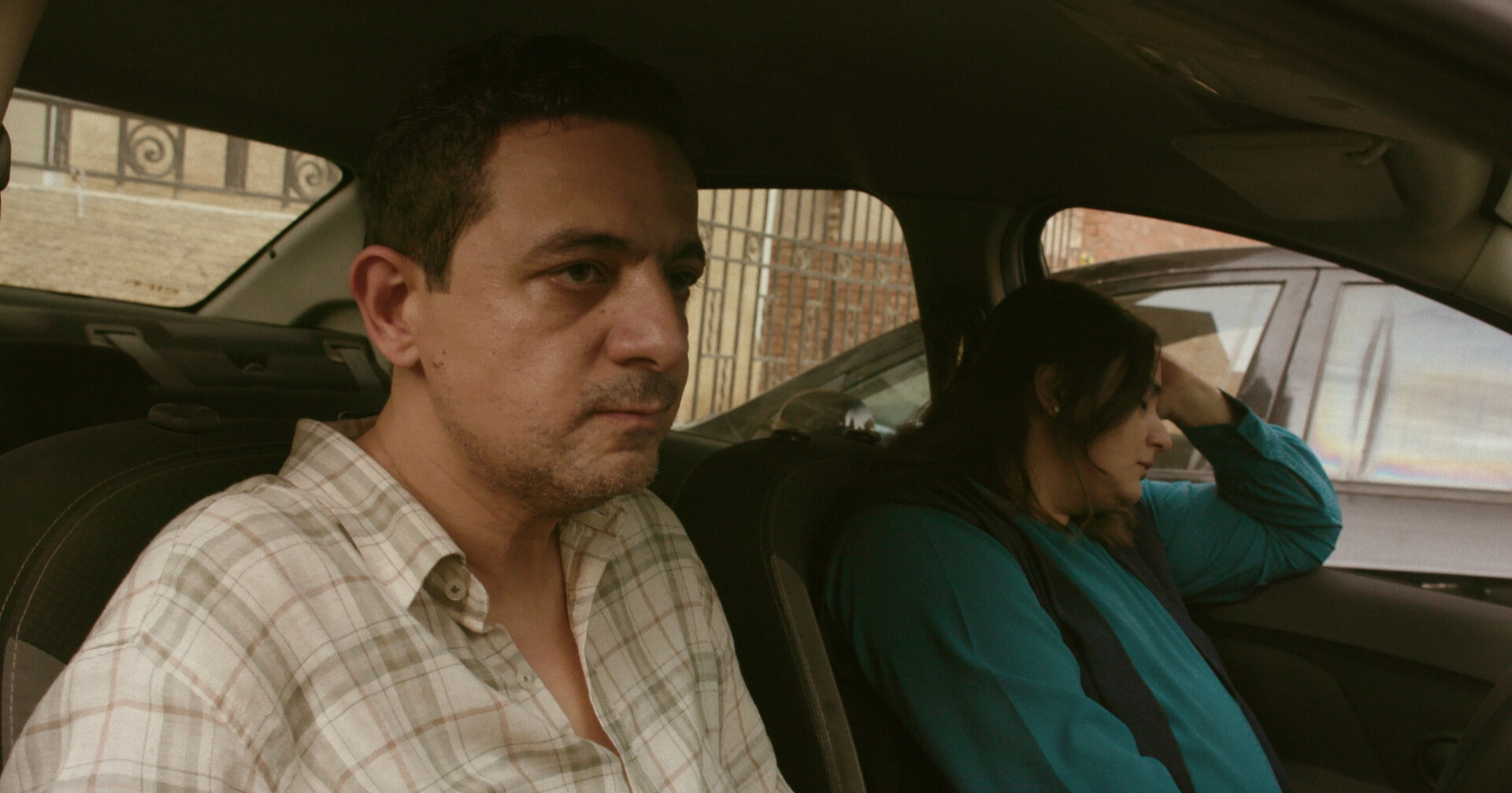
Still from Cairo Standstill (2025) | Egyptian Panorama Program
One of those celebrities is Amr Abed, though he takes off the hat of established actor and puts on that of emerging director for his second short film, ‘Cairo Standstill’. He calls the switch an exercise that helps “our brains not become stiff,” a learning opportunity in practising the vocabulary of cinematic language.
The film, developed during Abed’s filmmaking studies in Spain, received the obvious question at the Q&A: Why didn’t you cast stars? In our conversation, he kept returning to one statement: “It depends on what kind of film you’re making.” His film, co-written with Youma Khattab and produced by Ayman El Amir, follows a married couple trapped in a car ahead of a life-changing move outside of Egypt. That halt and trap in a Cairo street forces them to confront their decision.
“I wanted actors who look like us, not stars,” Amr explains. “If I’m working on a commercial feature film or a film for a platform, then yes, maybe having a star is warranted. If I’m working on a short film or an independent film, I’m making different choices. The film’s nature and its production model dictate that.”
Zeina Amr, director of The Day After, received the same question. On stage, she responded: “I didn’t consider casting a star.” Her film, a belated coming-of-age drama, follows a young woman the day after she has sex for the first time, exploring the overlap of shame and pleasure. A tender, warm image persists across the film as the lead, played by Malak Bazid, spirals between the two.
“Casting a star more often than not comes with its own production model, so choosing not to do it, or not even thinking about it, is a choice,” Zeina says. “Everyone on our set had multiple roles; we didn’t have a hierarchy. There was this spirit of ‘we’re doing this film because of this film’, it wasn’t meant to be a career milestone. It was about this film.”
The Day After, produced by Karim El Charkawy, relied on friends in its making: a location found through Instagram mutuals, borrowed lighting equipment, borrowed props. Its making was akin to a dish party.
“With this production model, the producer also initiates the project,” Zeina explains. She admits that had she gone to a production company, they probably wouldn’t have gotten on board with the film, or would have suggested someone else direct her script. “Production companies turn into clients, even when they’re making ‘indie’ films.” “Independent of what?” asks Karim. “Indie is not a genre; it’s a method. A film with a company or a fund behind it is not independent.”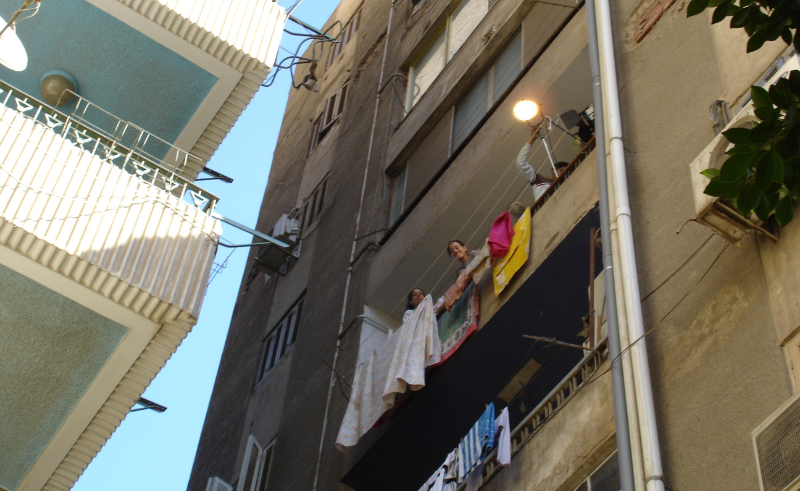 BTS from The Day After (2025) | Egyptian Panorama Program
BTS from The Day After (2025) | Egyptian Panorama Program
Where the Wind Comes From, one of the Panorama films, is one of those shorts where you know no entity was behind it, not because of the topic, but because of its manipulation of medium and clarity of voice. Shot in Edfu, Aswan, and directed by Hassan Nouby, the documentary follows Eissa and the community of Mermah, a centuries-old sport showcasing horsemanship. A mix of sharp cinematic visuals documenting the races and shaky camcorder footage carries the story, behind it Nouby and his producer/DOP Mohamed Hamzoun. They shot between 2017 and 2020 as a student project for the High Cinema Institute, in Nouby’s hometown of Edfu.
“I travelled with 12 crew members, four cameras, and two drones from Cairo to Aswan on a train. We didn’t have permits. I think we got away with it because we were honest with people. It was healthy chaos. I don’t think this film could’ve happened with a storyboard or a shooting schedule,” Nouby tells CairoScene. His film is rampant with movement. Shaky and guided by a race, a crowd, and a search for a heroic story of injustice, mischief, and humour in Eissa, the protagonist. For Nouby, the freedom he felt in Aswan as a kid, running through playgrounds, had to guide how the film was made. “We didn’t want to be managed,” he says. Still from Where the Wind Comes From (2025) | Egyptian Panorama Program
Still from Where the Wind Comes From (2025) | Egyptian Panorama Program
Nouby referred to the presence of a production company as an “obstacle” in our chat multiple times. This idea that the industry manual, the recipe for making films, becomes so fixed that anything outside of it feels impossible. Filming permits, for instance, a step Nouby skipped, often consume a large portion of low-budget productions’ resources (time and funds). That was the case with Amr Abed’s Cairo Standstill and Mark Ayman’s Cone, a short selected for CIFF’s official competition.
“I handled the street permits myself. In this production context, when directing, you’re also producing. Logistics are draining for any filmmaker - whether it’s scouting, casting, budgeting - but we have to compromise to make our films,” Mark Ayman tells CairoScene. Mark and the film’s producers (all film students Zeina Ramy and Karma Abu Aly) switched roles, handling the ‘artistic’ and ‘logistical’ aspects as they came.
Cone follows Hassan, a university professor struggling to park, and in that struggle, between him, the city, the garage man, and the cone saving a possible parking spot, the film explores class and power. “We wanted the least amount of people on set. My cousins were extras and I used their home as a location. I didn’t want to have location services on set; I wasn't comfortable with that dynamic as a student making a grad project. The film doesn’t look like a student film, but on set, I wanted to preserve that energy,” Mark tells CairoScene.
In making an “indie short,” securing funding is a global challenge. Raising money for the arts remains the ultimate late-night bar joke; the starving artist trope endures, but in Egypt, access to funding is even more limited. Festival funds tend to prioritise films with a clear “social cause,” and the Arab region as a whole competes for a small pool of opportunities. If a project isn’t explicitly about a sociopolitical issue, often framed around oppression or marginalisation, the odds are stacked against Egyptian filmmakers. In a region rife with political challenges, where some countries face more acute issues than Egypt, the chances shrink even further. Hassan Nouby, for example, was advised to turn his short into a feature and centre his protagonist’s story of oppression to appeal to distributors, a path he ultimately chose not to take, despite the odds.
All the filmmakers I spoke to stressed the importance of prioritising the crew: finding the right people and incentivising them. Mark described studying the footage extensively before each editing session so as not to take up too much of editor Ahmed El Saaty’s time. Amr knew he needed to work with people also experiencing something new—that the film had to mean something to everyone, not just him. Zeina called her collaborators’ labour in the film a “treat” alongside their “real jobs.” And Karim described the process as “making a film in the margins of everyone’s free time.”
In that very margin of time, of production, the film emerges, at the Grand Opera Hall, and speaks to its audience and to its making. Leaving everyone asking: How did you make this film?
Editor’s note/disclaimer: Some of the films featured here were made by people I’m lucky to call friends. And ‘The Day After’ was directed by my sister, Zeina Amr Desouky. The best kind of conflict of interest.







.jpeg)
